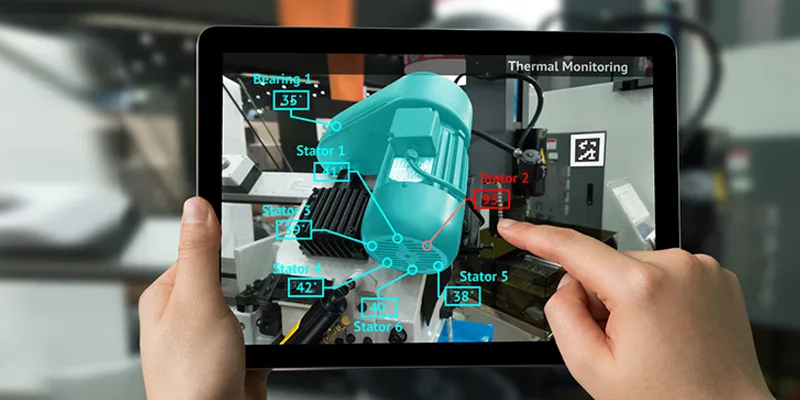Experience new worlds with these Augmented Reality apps
Augmented Reality (AR), a technology which overlays Computer Generated Imagery (CGI) on an existing environment, is no longer a futuristic dream. Over the past few years, adoption of this new technology has steadily increased thanks to several factors such as the mass adoption of smartphones and lowering development costs. With tech behemoths like Apple, Google, and Facebook leaving no stone unturned in exploring the vast potential of AR, it has become one of the most talked-about topics in the tech world today. Using development tools such as Apple’s ARKit and Google’s ARCore, developers have implemented AR technology in everything from games and utilities to marketing and social media.
With 2018 touted to be a turning point for the mainstream adoption of the technology, we have compiled a list of the best apps released so far which have been instrumental in familiarising people with augmented reality. As is evident from the list below, the vast majority of fully functional AR apps currently tend to be for gaming, as AR tech lends itself easily to the make-believe worlds found in many games. However, as the ecosystem becomes more robust and more developers start to seek opportunities in different avenues, one can likely expect to see AR moving beyond gaming in a big way in the future:

Image: Shutterstock
Ingress (Android and iOS)
Niantic Labs, a company spun off from Google, pioneered location-based augmented-reality games with the launch of Ingress in 2013. This massively multiplayer online game (MMOG) divides players into two factions that compete to capture ‘portals’ which are located at places of significance in the real world, such as landmarks, monuments, and other famous buildings. Ingress requires players to physically travel to these locations as they engage in absorbing science-fiction gameplay in which they are rewarded with points for taking actions such as destroying or damaging an enemy portal, capturing, linking, or recharging a portal, and more.
Ingress is essentially one giant real-time game of Capture The Flag wherein individual players participate without ever having to interact directly with each other (in the game or in real life).
Pokemon GO (Android and iOS)
Arguably the biggest game-craze in recent years, Pokemon GO took the concept of location-based AR games perfected by Ingress and applied it to one of the most popular games of all time: Pokemon. Developed by Niantic Labs in collaboration with Nintendo, Pokemon GO took the world by storm when it was launched in 2016. By using the GPS in users’ mobile devices, the game displayed Pokemon on screens as if they were at the same real-world location as the player. Besides the creatures themselves, other in-game locations such as Pokemon Gyms, Stops, and Centres were also attributed to real-world locations.
Such was the popularity of the game that its players caused several accidents and impromptu crowds as they strived to locate and capture all the Pokemon they could. While this drew the ire of several governments, many critics lauded the fact that the game promoted physical activity. Estimates claim that the app had been downloaded 750 million times within its first year itself.
Zombies, Run! (Android and iOS)
Before Ingress and Pokemon GO took the world by storm, a game called ‘Zombies, Run!’ was instrumental in demonstrating the potential of augmented reality in games way back in 2012. Developed by Six to Start, ‘Zombies, Run!’ is an immersive running game in which players try to survive the zombie apocalypse in an outpost called Abel Township. The app is effectively an exercise game (or ‘exergame’ as they’re known) which aims to make running a more fun and interactive activity for its users. ‘Zombies, Run!’, which was initially crowd-funded by a Kickstarter campaign, became so popular that multiple seasons of the game, each with several different missions, were subsequently launched over the next four years.
The app, which can record the distance, time, pace, and calories burned by players using their phone’s GPS or accelerometer, also became among the most popular ‘health and fitness apps’ on Apple’s App Store.
PuzzlAR: World Tour (iOS only)
Initially launched on the Windows Store for HoloLens, PuzzlAR: World Tour is one of the best AR games available on the market today. Developed by Bica Studios, the game is a 3D spatial puzzle that requires players to reconstruct exploded models of world-famous monuments by moving their device and making use of gaze-and-touch controls through the camera’s view. The game currently features only the Statue of Liberty, Forbidden City, Taj Mahal, and Saint Basil Cathedral, but is expected to incorporate more famous landmarks soon. While PuzzlAR is a paid app, its clean user interface, detailed animations, and interesting challenges make it well worth the $2 price tag.
Vuforia Chalk (iOS)
Vuforia Chalk is an application that uses augmented reality to solve a very niche problem: allowing users to set-up, repair, or fine-tune appliances and devices. It does so by setting up a video call between two parties, in which the person requiring help points their camera at whatever they need help with and the other person draws on their own screen while providing instructions and advice. Since these ‘chalk marks’ virtually stick to the surface of whatever object they’re drawn on, the app makes it incredibly easy to help even the most technologically-challenged person troubleshoot problems and make the necessary repairs.
Google Translate (Android and iOS)
While it isn’t strictly an augmented reality app, Google Translate does have one feature that makes it a shoo-in for this list: the app’s camera mode. Using the camera on your mobile device, Google Translate can translate text from one language to another in real-time. This can help tourists read street signs in a foreign city or order food off a menu printed in a language they don’t know. In addition to supporting a multitude of languages when the device is connected to the internet, the app also allows users to download language packs of their choice for instant translation even without internet or cellular connection.
WallaMe (Android and iOS)
WallaMe is essentially a location-based messaging board which allows users to leave either private or public messages in real-world locations. WallaMe users can take a picture of any nearby wall and use the in-app sketching tools to craft an augmented reality drawing or message that can be read only when other WallaMe users train their device’s camera on the same spot. Users have the option to make their messages either private (only viewable by their friends) or public (viewable by all WallaMe users). They can also add pictures, stickers, and other freely-available content to personalise their messages as they want.
Besides the apps listed above, social media applications like Facebook, Instagram, and Snapchat also feature some noteworthy implementations of augmented reality in their photo and video features. And as the technology continues to become more ubiquitous with each passing day, one can expect to see several more applications of AR made available soon.







![[Weekly funding roundup Jan 4-10] VC inflow shows steady rise](https://images.yourstory.com/cs/2/220356402d6d11e9aa979329348d4c3e/funding-lead-image-1669386008401.jpg?mode=crop&crop=faces&ar=1%3A1&format=auto&w=1920&q=75)